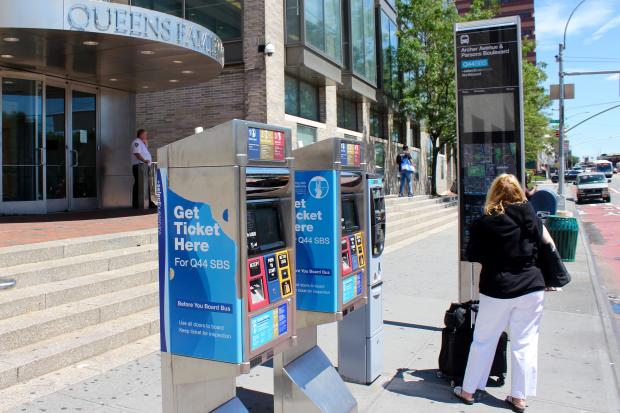
QUEENS — Fare payment machines at a Jamaica stop for the Q44 Select Bus have had no power for the past two months, frustrating straphangers who have since had to pay for their ride at the next stop, commuters said.
The machines at the Archer Avenue/153rd Street stop, in front of the Queens County Family Court, went offline on June 19, according to the MTA.
Straphangers using Select Bus Service lines have to insert their MetroCards into machines, which then issue their receipts to allow them to board at any door in order to avoid long lines at the front of the bus.
But passengers who get on the bus at the courthouse, have to get off at the next stop on Archer Avenue and Sutphin Boulevard and pay for their ride there, which can take a couple of minutes depending on the number of passengers, straphangers said.
“It was supposed to make our commute faster,” said Mary Chin, a Flushing resident who works in Jamaica, and takes Select Bus Service on the Q44, which launched last November to speed up travel between Jamaica, Flushing and the Bronx.
“Why does it take so long to fix it?,” Chin said. “It’s frustrating because these machines are brand new.”
The MTA said Friday that the machines stopped working “due to a lack of Con Edison power.”
“We have been working with both Con Edison and NYCDOT Street Lighting to repair the power supply to the machines,” said Marisa Baldeo, a spokeswoman for the MTA, in an email.
Con Ed spokesman Allan Drury said in an email that "the service that provides power to the machines and a streetlight is burnt out and needs to be replaced."
"We will speak with the MTA and DOT about scheduling the work," Drury noted.
It was not clear when the machines will be fixed.
A spokesman for the Department of Transportation said the agency is looking into the matter.
According to a recent report from the MTA's Inspector General, machines throughout the city encounter similar problems. There were more than 9,000 outages in various neighborhoods in the 12-month period ending July 31, 2015, the report claims, and 16 percent of those outages lasted at least four days.



















